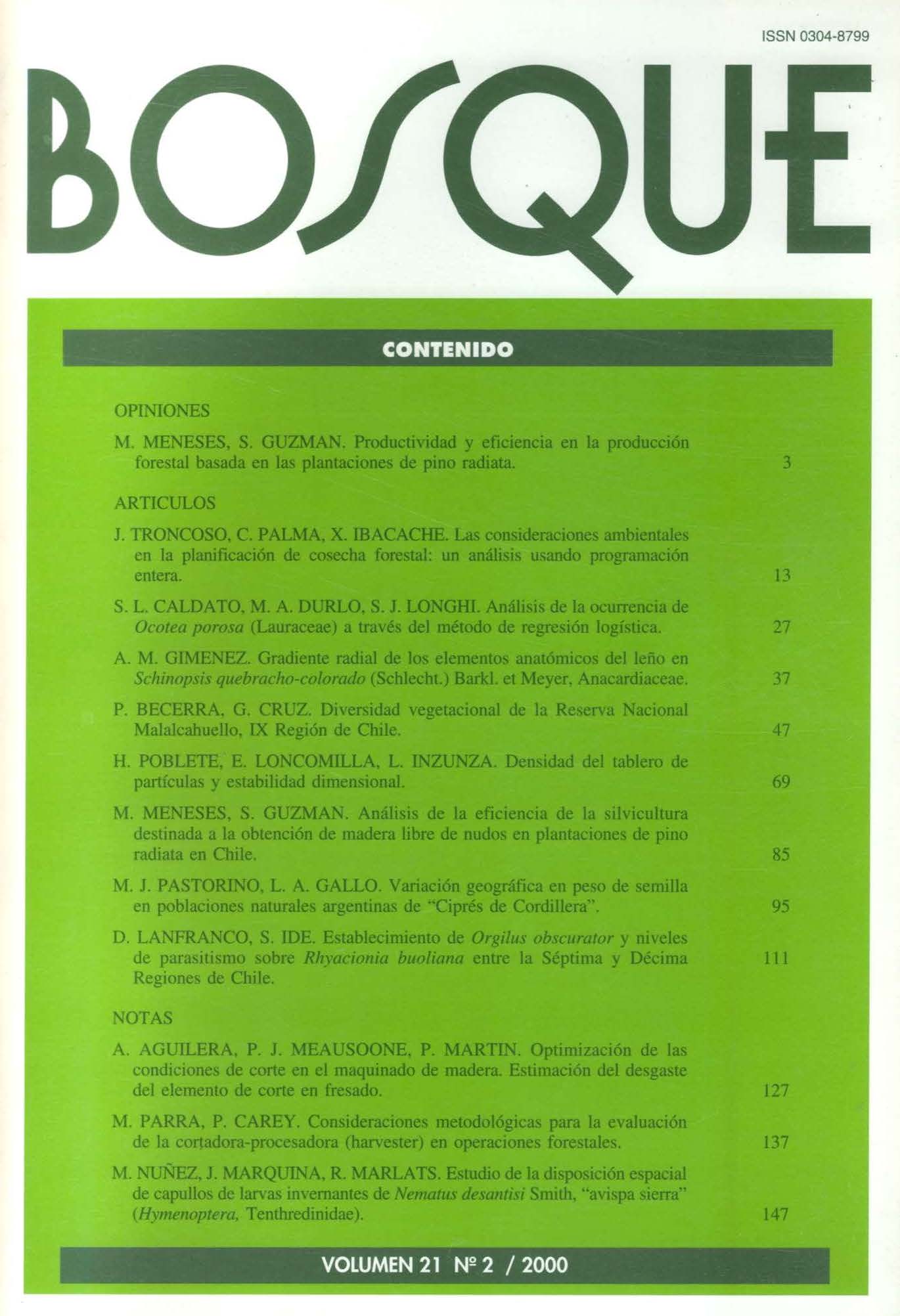Main Article Content
Dec 29, 2000
Abstract
"Ciprés de la Cordillera" is the most important conifer of the Patagonian Andean Forest in Argentine. This study examined the geographic variation in seed weight and germination capacity in 11 natural populations distributed in three latitudinal transects, and corresponding to the three principal forest types in which this species occurs in Argentine. The mean weight of 1000 undamaged, filled seeds was 3.94 g, and the mean germination capacity in the nursery trial without cold-humid pre-treatment was 12.95%. Variability was proved for both variables between populations within forest types, and between families within populations. However, no significant differences could be proved between forest types (precipitation regions), and most of the total variation was caused by variation between families (85%). Although a complementary analysis variability was proved for seed weight according to the latitude of the populations (at least in dry and mesic environments), it was not possible to prove it between populations within a certain latitude. Ecotypic variation is assumed, which might be explained through adaptive processes to high definite "gene flow corridors" and the additional effect of genetic drift.


